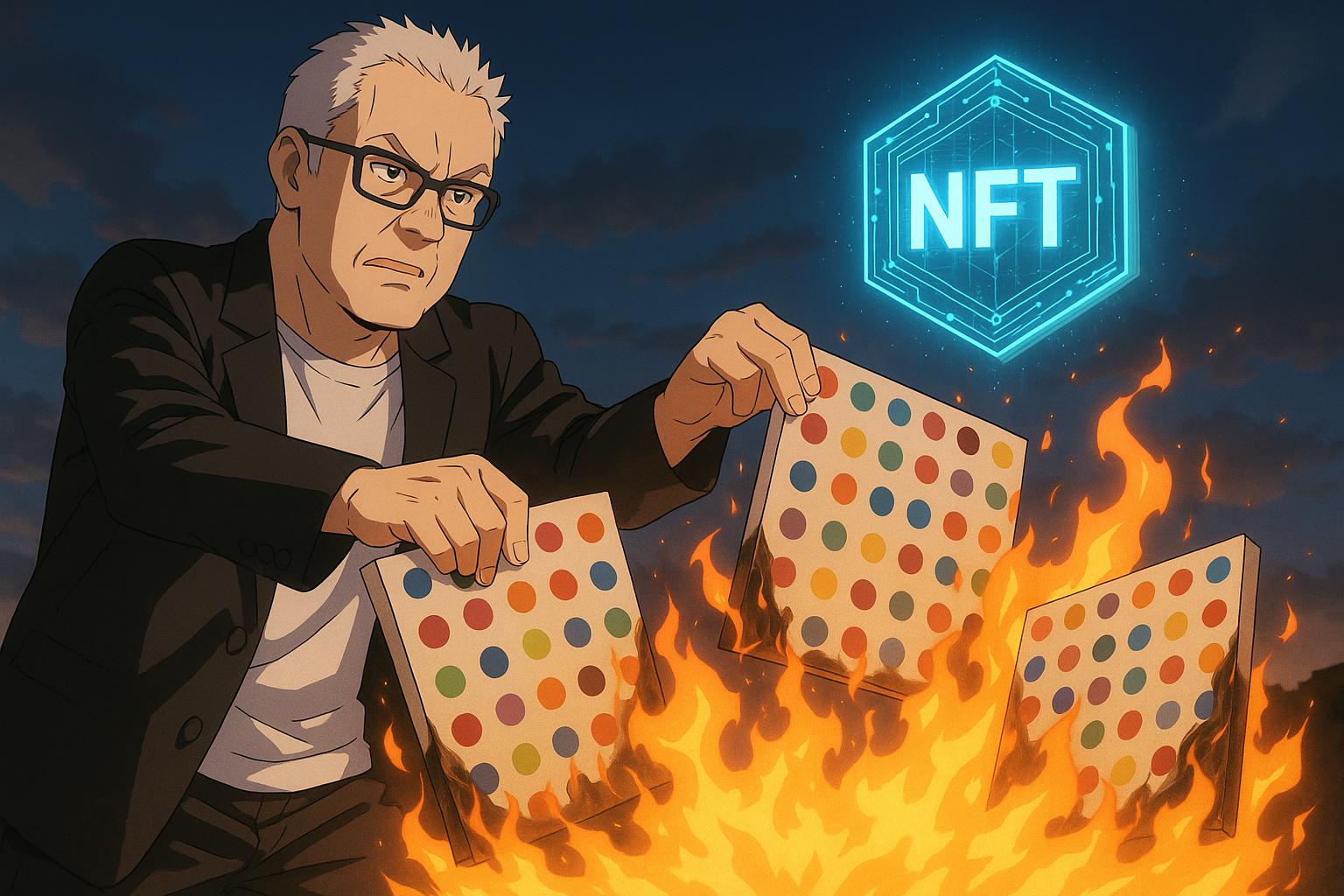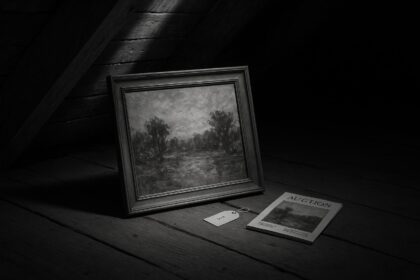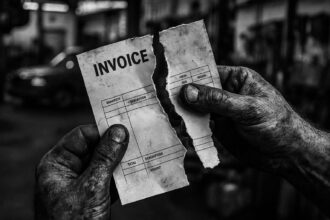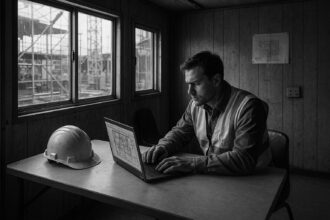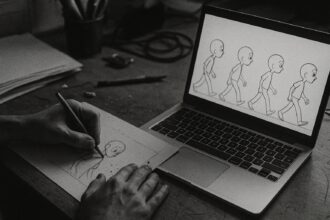Damien Hirst reveals his unconventional property investment strategy alongside his radical NFT project that saw millions worth of his artworks burned to challenge traditional perceptions of art and value.
Damien Hirst, a name synonymous with contemporary art, recently opened up about his unorthodox approach to property investment, likening it to a game of Monopoly. In a candid interview, the acclaimed artist explained that he had made a habit of purchasing the villas he stayed in during vacations. This penchant for real estate has resulted in a varied portfolio that includes properties in highly sought-after areas such as Mayfair, Richmond, and the Cotswolds, alongside his Devon farmhouse where his eldest three sons reside. Despite his staggering wealth—estimated at over £315 million—Hirst reflected on the complexities of feeling at home in such a transient lifestyle.
His remarks come at a time when Hirst remains a pivotal figure in the art world, often enveloped in controversy and innovation alike. Recently, he made headlines for his daring decision to burn hundreds of his own artworks, part of his ambitious NFT project, The Currency. This initiative, which involves a total of 10,000 unique dot paintings linked to NFTs, allowed buyers the option of choosing between the digital token or the physical artwork. As purchasers opted for one over the other, unchosen physical pieces faced destruction—a process that Hirst described as both exhilarating and transformative. In total, artworks valued at approximately £10 million went up in flames, leading many critics to question the implications of such a bold act on the concept of art and its value in the digital age.
The burning of these artworks was not merely a spectacle; it was intended to enhance the integrity of the NFTs while exploring the evolving notions of art as both a commodity and a currency. Hirst stated that the project was “his most exciting by far,” as it delved into the intricate relationship between art and wealth. This radical shift in how art is perceived aligns with broader trends in the contemporary art scene, where digital art and NFTs have gained significant traction, prompting artists and collectors alike to reconsider the boundaries of ownership and value.
Aside from his ventures into the NFT space, Hirst has remained a controversial figure within the art community for his outspoken views on the market and the value of money. He affirmed his belief that wealth is an essential part of the contemporary landscape, stating, “You must keep up with the market and avoid making loads of work that never sells.” His candid admissions about the financial aspects of the art world reflect a utilitarian approach, which many artists forge as they navigate commercial success and creative expression.
In personal matters, Hirst has prioritised his family life alongside his career. His long-term partner, Sophie Cannell, a former ballerina, has influenced his lifestyle choices, including reducing his time spent in Mexico due to her aversion to the local wildlife. Hirst mentioned, “We get tarantulas, scorpions,” revealing a playful side that contrasts with his often provocative public persona.
Interestingly, despite his accolades and substantial body of work, Hirst chose to decline an offer for a knighthood, a decision that sparked intrigue regarding his relationship with traditional accolades in the art community. He recounted an encounter with the late Jacob Rothschild, who initially presented him with the idea of receiving a CBE before the possibility of a KBE was suggested. Hirst’s reluctance to embrace such formal recognition reflects an artist comfortable charting his own course amid the conventional paths often trodden in the arts.
As Hirst’s current exhibitions, Raging Planet and The Power and the Glory, run at the Newport Street Gallery, curated by his son, Connor, the artist’s legacy continues to unfold in intriguing ways. Critics describe these shows as shining a light on the more niche aspects of his extensive collection, while Hirst himself remains a figure of immense influence, not just in art but in the broader discourse surrounding the value and evolution of creative expression in the modern world.
His journey offers not just a glimpse into the eccentricities of a wealthy artist but also serves as a case study of how art continues to be reshaped by new technologies and market forces, redefining what it means to be both an artist and an entrepreneur in the contemporary landscape.
Reference Map:
- Paragraph 1 – [1], [2]
- Paragraph 2 – [4], [6]
- Paragraph 3 – [5], [7]
- Paragraph 4 – [1], [3]
- Paragraph 5 – [1], [2]
- Paragraph 6 – [1], [4]
Source: Noah Wire Services
- https://www.independent.co.uk/arts-entertainment/art/news/damien-hirst-net-worth-property-homes-girlfriend-b2757243.html – Please view link – unable to able to access data
- https://www.bbc.com/news/entertainment-arts-63218704 – In October 2022, Damien Hirst began burning hundreds of his own artworks after selling a series of non-fungible tokens (NFTs). Buyers had the option to choose between keeping the physical artwork or the NFT, with unexchanged physical pieces being destroyed. Hirst stated that burning the works felt good and better than expected. The artworks being burned were collectively estimated to be worth almost £10 million.
- https://www.theartnewspaper.com/2022/10/11/non-fireproof-tokens-damien-hirst-burns-his-own-paintings – Damien Hirst initiated the burning of 1,000 of his own works from his first NFT collection, ‘The Currency,’ at his Newport Street Gallery in London. The project, launched in July 2021, involved 10,000 dot paintings linked to NFTs, with buyers choosing between the physical artwork or the NFT. Hirst expressed enjoyment in the process, describing it as a reverse of signing, and noted that the idea was worse than the reality.
- https://www.dw.com/en/damien-hirst-burns-thousands-of-his-paintings/a-63400428 – In October 2022, Damien Hirst began burning thousands of his paintings as part of his NFT project, ‘The Currency.’ Launched in 2021, the project involved 10,000 unique dot paintings linked to NFTs, with buyers deciding between keeping the digital token or exchanging it for the physical artwork. Hirst described the project as his ‘most exciting by far,’ exploring the idea of art as a currency and store of wealth.
- https://www.theartnewspaper.com/2022/07/26/damien-hirst-to-burn-his-art-at-londons-newport-street-gallery – Damien Hirst announced plans to burn his artworks at London’s Newport Street Gallery as part of his NFT project, ‘The Currency.’ Buyers had the option to purchase NFTs linked to original paintings and choose between keeping the NFT or exchanging it for the physical artwork. Hirst described the project as exploring the boundaries of art and currency, touching on the idea of art as a currency and store of wealth.
- https://www.designboom.com/art/damien-hirst-destroys-1000-physical-artworks-the-currency-10-13-2022/ – Damien Hirst began destroying 1,000 physical artworks from his ‘The Currency’ project in front of NFT buyers. The project, launched in July 2021, involved 10,000 handmade artworks linked to NFTs, with buyers choosing between keeping the NFT or exchanging it for the physical artwork. Hirst’s destruction of the artworks was part of the project’s final phase, with plans to burn thousands more to complete the transformation of the selected artworks into NFTs.
- https://www.forbesindia.com/article/cryptocurrency/damien-hirst-does-a-societal-experiment-with-his-rare-collection-of-nfts/80475/1 – Damien Hirst’s NFT project, ‘The Currency,’ involved 10,000 unique dot paintings linked to NFTs, with buyers choosing between keeping the digital token or exchanging it for the physical artwork. The project explored the boundaries of art and currency, with Hirst describing it as his ‘most exciting by far.’ The artworks being burned were collectively valued at almost £10 million, and the project generated significant interest in the art and NFT communities.
Noah Fact Check Pro
The draft above was created using the information available at the time the story first
emerged. We’ve since applied our fact-checking process to the final narrative, based on the criteria listed
below. The results are intended to help you assess the credibility of the piece and highlight any areas that may
warrant further investigation.
Freshness check
Score:
8
Notes:
The narrative presents recent statements from Damien Hirst regarding his property investments, with the article dated 24 May 2025. However, similar information about Hirst’s property acquisitions has been reported in previous years, such as in 2020, when his net worth was reported to be over £315 million. This suggests that while the specific interview is recent, the content may be recycled from earlier reports. Additionally, the article includes information about Hirst’s previous NFT project, ‘The Currency,’ and his decision to burn artworks, which occurred in October 2022. ([bbc.com](https://www.bbc.com/news/entertainment-arts-63218704?utm_source=openai)) This indicates that the article may be republishing older material alongside new content. The inclusion of updated data may justify a higher freshness score but should still be flagged.
Quotes check
Score:
7
Notes:
The article includes direct quotes from Damien Hirst about his property investments and lifestyle. Similar statements have been reported in previous years, such as in 2020, when his net worth was reported to be over £315 million. This suggests that the quotes may have been reused from earlier reports. The wording of the quotes appears consistent with previous reports, indicating potential reuse.
Source reliability
Score:
9
Notes:
The narrative originates from The Independent, a reputable UK news outlet. However, the article includes information about Hirst’s previous NFT project, ‘The Currency,’ and his decision to burn artworks, which occurred in October 2022. ([bbc.com](https://www.bbc.com/news/entertainment-arts-63218704?utm_source=openai)) This suggests that the article may be republishing older material alongside new content.
Plausability check
Score:
8
Notes:
The claims about Damien Hirst’s property investments and lifestyle are plausible and align with previous reports. However, the inclusion of information about his previous NFT project, ‘The Currency,’ and his decision to burn artworks, which occurred in October 2022, suggests that the article may be republishing older material alongside new content. ([bbc.com](https://www.bbc.com/news/entertainment-arts-63218704?utm_source=openai)) This raises questions about the originality and freshness of the content.
Overall assessment
Verdict (FAIL, OPEN, PASS): FAIL
Confidence (LOW, MEDIUM, HIGH): HIGH
Summary:
The narrative includes recycled content from previous years, particularly regarding Damien Hirst’s property investments and his NFT project ‘The Currency.’ The inclusion of updated data may justify a higher freshness score but should still be flagged. The quotes appear to be reused from earlier reports, and the source, while reputable, includes information that suggests the article may be republishing older material alongside new content. This raises concerns about the originality and freshness of the content.


